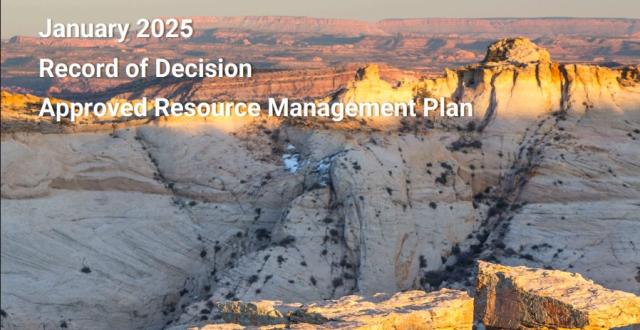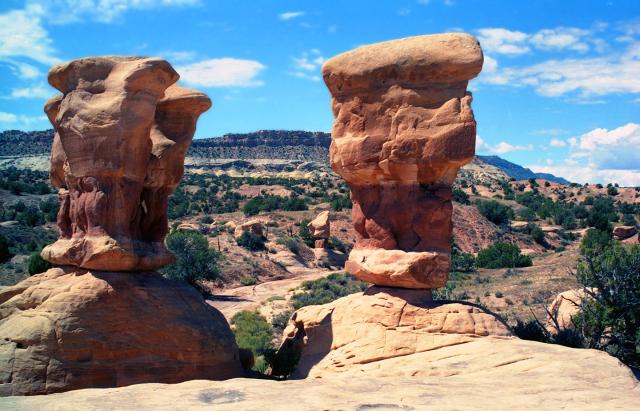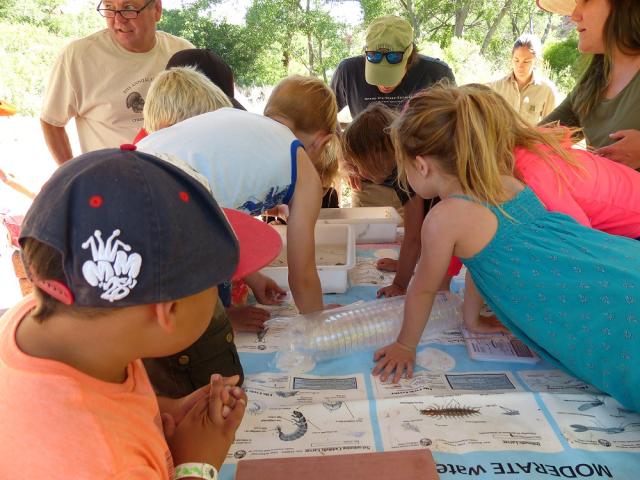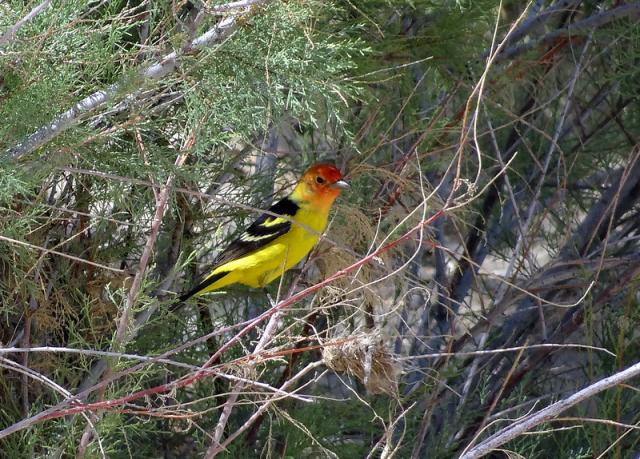
Learn and Explore
When visiting Grand Staircase-Escalante National Monument, you’ll be traveling the land of the Ancestral Puebloan and Fremont people, who were experts at farming this rugged land and built granaries to store what they grew. Their descendants, including people from the Hopi, Paiute, Zuni, Ute, and Navajo tribes, have strong ties to this land today, leaving behind rock art panels, occupation sites, campsites and granaries.
Stepping further back in time, fossil excavations have yielded more information about ecosystem change at the end of the dinosaur era than any other place in the world. The Monument’s size, resources, and remote character provide extraordinary opportunities for geologists, paleontologists, archeologists, historians, and biologists in scientific research, education, and exploration. This unspoiled natural area also remains a frontier with countless opportunities for quiet recreation and solitude.
Get to know a Monument 'ologist
Prepare to embark on a journey inside Grand Staircase-Escalante National Monument, where we continue to explore the world of scientists dedicated to unraveling its mysteries. Discover the latest installment at Grand Staircase-Escalante National Monument: Meet an 'Ologist and browse through the archives listed below.
- Paleontology
Meet Madi, a young paleontologist with a cool story to tell. Did you know she discovered her first dinosaur at age 14? In celebration of #InternationalDayOfWomenAndGirlsInScience, we share Madi's journey from taking her childhood passion for paleontology and turning it into a career. StoryMaps has more about Madi’s inspiring story.
- Water Quality
-
Meet Dr. Hannah Bonner! Hannah is an environmental scientist for the Utah Department of Environmental Quality. Hannah works with Grand Staircase-Escalante National Monument Soil Scientist Raven Chavez in monitoring recreational water at Calf Creek Falls in Escalante, Utah.
Hannah is a Utah native who started her career as scientist in 2016, and together she and her team are dedicated to safeguarding public health in Utah's renowned lakes, reservoirs, and rivers.
Her Story: BLM Blog | Facebook Feature | Instagram Feature
- Wildlife
-
Lisa Church helps monitor and document the potential impacts of proposed projects on wildlife and its habitat. As a subject matter expert in fauna for the Kanab Field Office and Grand Staircase-Escalante National Monument, Lisa’s main responsibility is to serve as a part of the interdisciplinary team that monitors and documents the potential impacts of proposed projects on a species and its habitat.
Her Story: Facebook Feature | Instagram Feature
- Soils
-
Raven Chavez started her soils journey in December 2012 at the Oregon State College of Forestry and worked for a few federal agencies before starting her career with the Bureau of Land Management. In addition to her primary duties, Raven can also be found bringing soil science to the classroom, speaking about her work with students, conducting worm races, and stressing the importance of an education in science, technology, engineering, and mathematics, more commonly known as STEM. To learn more about some of Raven’s work as a Grand Staircase-Escalante National Monument Soil Scientist, visit: Scientists take AIM at natural resources on BLM land.
Her Story: Facebook Feature
- Paleontology
-
Katja Knoll, Paleontologist and Lab Manager for Grand Staircase-Escalante National Monument, is a film student- turned-paleontologist. After pursuing an education for documentary filmmaking and rediscovering a passion for science, Katja’s career path and education took an unexpected detour. Katja moved to Kanab, Utah, and began working as a paleontology intern for Dr. Alan Titus at Grand Staircase-Escalante National Monument during the summer of 2014. Shortly after, Katja was hired full-time as the paleontology lab manager for the Monument and graduated with a Master of Science in Geology. Katja also helped Dr. Alan Titus expand the Monument’s paleontology volunteer program and continues to manage it today, which she says brings a myriad of diversity and perspective to the program.
Her Story: Facebook Feature
Research Stories
- News Releases
94-million-year-old fossil provides clues to ancient reptile evolution
Monument nets important dinosaur discovery
Dinosaur exhibits now on display
Scientists take AIM at natural resources on BLM land
Helping hands work together to restore historic cabin
Dino dentistry extracts paleo story from public land
Evidence indicates tyrannosaurs may not have been a solitary species after all
- Interviews with Scientists

"Reconstructing Kaiparowits Ecosystems" - Guest Speaker: Sarah Augusta “Gussie” MacCracken
"Reconstructing Kaiparowits Ecosystems"
Dr. Sarah Augusta “Gussie” MacCracken, paleobotanist and National Science Foundation postdoctoral fellow, Department of Earth Sciences at the Denver Museum of Nature and Science, chats with Grand Staircase-Escalante National Monument Paleontologist Dr. Alan Titus about reconstructing Kaiparowits ecosystems from the bottom up and how scars on fossil leaves illuminate the diversity of ancient plants and insects on the Monument.

"Dinosaur Discoveries from Laramidia's Southern Frontier" - Guest Speaker: Dr. Joseph Sertich
"Dinosaur Discoveries from Laramidia's Southern Frontier"
Dr. Joseph (Joe) Sertich, Curator of Dinosaurs at the Denver Museum of Nature & Science, and Grand Staircase-Escalante National Monument Paleontologist Dr. Alan Titus discuss research through 10 years of collaborative exploration of the monument and new dinosaur discoveries from Laramidia's southern Frontier.
 "Turtle Diversity at the National Monument" - Guest Speaker: Dr. Joshua Lively
"Turtle Diversity at the National Monument" - Guest Speaker: Dr. Joshua Lively"Turtle Diversity at the National Monument"
Dr. Joshua Lively, curator of paleontology at Utah State University Eastern Prehistoric Museum, talks with Grand Staircase-Escalante National Monument Paleontologist Dr. Alan Titus about his research on a new freshwater sea turtle from Grand Staircase-Escalante National Monument and reviews turtle diversity in the Cretaceous Kaiparowits Formation.

"Penstemon of Utah and the Intermountain West" - Guest Speaker: Dr. Mikel Stevens
"Penstemon of Utah and the Intermountain West"
Dr. Mikel Stevens, Emeritus Professor of Plant Genetics and Plant Breeding at Brigham Young University, chats with Grand Staircase-Escalante National Monument Paleontologist Dr. Alan Titus about his penstemon research on the Monument.

"Navajo Cultural Connections to the Southern Utah Landscape" - Richard Begay: Tribal Historic Preservation Officer, Navajo Nation
"Navajo Cultural Connections to the Southern Utah Landscape"
Richard Begay worked on the Navajo Indian Reservation in Arizona, New Mexico, and Utah as a field archaeologist and later as an ethnologist for various projects, including the Bureau of Reclamation’s Glen Canyon Environmental Studies efforts to document Navajo history of the Grand Canyon region.
Disclaimer: The views and opinions expressed in this audio message are those of the author and do not necessarily reflect the official policy or position of the Bureau of Land Management.
- Presentations
Penstemon of Utah, Dr. Mikel Stevens
Enigmatic Traces of Sacred Water, Michael Terlep
Bees: Jewels of the desert, Dr. Olivia Carril
Utah's Hidden Ecosystems, Dr. Randall Irmis
Water & Weather Data
Streamflow data from USGS at https://waterdata.usgs.gov/ut/nwis/rt which reports daily flow data across Utah including a few in Grand Staircase-Escalante.
Water quality data, including harmful algal blooms at Calf Creek, from Utah Department of Environmental Quality: https://deq.utah.gov/water-quality/recreational-water-quality-home.
MesoWest Utah Weather Stations at https://mesowest.utah.edu/ report real-time weather data from stations across the US including a few in Grand Staircase-Escalante.
Grand Canyon Trust also offers lots of great information about the ecology and history of this region.










